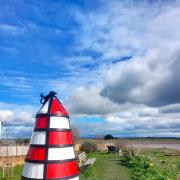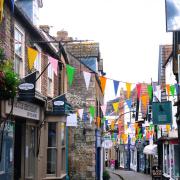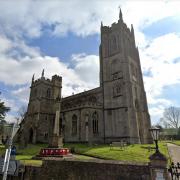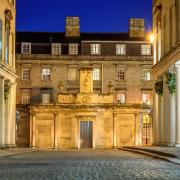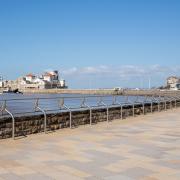Discover the rich and colourful history of Thermae Bath Spa, says Rachael D’Cruze-Sharpe

Humble Beginnings
Thanks to archaeological evidence we can trace the hot springs on which the City of Bath is built to at least 8,000 years BC. At this time the city would have been essentially a lushly vegetated hot, steaming swampy area – too mysterious for a settlement. However, legend has it that Prince Bladud bathed in these hot muddy waters and was cured of his leprosy! Bladud, who went on to become the 9th king of the Britons, founded the City of Bath in 833BC in gratitude.
Rest and relaxation for the romans

The Romans started to develop ‘Aquae Sulis’ as a place of rest and relaxation in AD 43. In AD 70, they built a reservoir around the hot springs. A series of baths and a temple dedicated to the goddess Sulis Minerva followed.
Destruction and decline
Although use continued, Aquae Sulis fell into decline in 410, after the withdrawal of Roman protection. Historical finds show that in 675 the name Hat Bathu first came into use. The Cross Bath may have possibly taken on this name because the body of St Aldhelm rested here on its journey from Doulting to Malmesbury in 709. It’s thought that Alsi’s Bath, later and now called the Hot Bath, was probably named after St Aelfsige, who is thought to be responsible for building a Saxon Bath to replace the Roman one – it’s thought that at one point Bath was little more than roofless ruins surrounding the baths. Much of Bath was destroyed during a rebellion against William Rufus, but the appointment of John Villula as Bishop of Bath saw a turn of fate for the city and the baths. Thanks to him, a substantial re-shaping of the street plan took place, including a rebuilding of the baths.
Royal Visits and good fortune
During the 16th century the baths attracted visitors from considerable distances and a number of improvements were made, including a new drainage system, separate Lepers’ Bath and segregated bathing (which didn’t last). Royal visits in both the 16th and 17th centuries increased the fame and fortune of Bath considerably. Princess/Queen Anne was a regular to the waters as she sought a cure to her gout and dropsy, which is why the New Bath was renamed to the Queen’s Bath. There was then an emphasis on drinking Bath’s water and a long list of diseases it was set to cure. By the 1900s bath spa water was bottled and sold as Sulis Water, promising relief from gout, sciatica, neuritis, lumbago and rheumatism. The Hot Bath was rebuilt in 1973 to the design of John Wood the Younger and, from 1783, The Cross Bath was rebuilt by Thomas Baldwin. John Palmer took over from Baldwin and moved the north-facing serpentine front to face east along the newly created Bath Street. At the same time, in the 1790s, the Great Pump Room was built to replace the 1706 Room and during the excavation of the foundations many of the first finds relating to the Roman Temple were made. This period also saw the creation of the Museum of Antiquities, which sits next to the entrance to the Thermae, and the outside niches were decorated with statues of Kings Edgar and Coel.
Closure and disinterest
Following the establishment of the National Health Service, arrangements were made for water-cure treatments on prescription. However, when the Royal Water Mineral Hospital had their own pool built, the Hot Bath closed. Similarly, The Tepid Bath and Beau Street Swimming Bath, which replaced it in 1926, survived only until 1978, when the new swimming baths opened in North Parade. The future looked unpromising as the council, as owner, was reluctant to invest in the facilities and the NHS had no further interest in the old baths.
The new Thermae Bat Spa
During the 1980s there were several commercial companies who hoped to re-open the spa for bathing, but failed due to the huge capital cost of renovation. For 30 years the local community supported efforts to restore Bath’s historic spas, while visitors remained puzzled by the waste of the natural resource. In 1995 Bath and North East Somerset Council, who own the spa buildings and are guardians of the thermal water, applied to the National Lottery for new project funding. Subsequently, in November 1997, the Millennium commission announced that the Bath Spa Project had been granted £7.78 million. The grant allowed the restoration of five historic buildings, including the 18th century Hot Bath and Cross Bath. The New Royal Bath, a breathtaking glass and stone building, was added, designed by internationally-acclaimed architects Sir Nicholas Grimshaw & Partners. Thermae Bath Spa is now a leading tourist attraction and a credit to Somerset. From the Minerva Bath with its grand columns and flowing curves to the Hot Bath, which is reserved for the spa’s signature treatment: Watsu, a deeply relaxing mix of shiatsu and acupressure, there is something to delight everyone. The Romans would have loved it.






